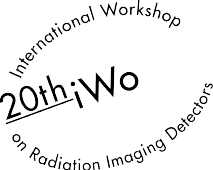Speaker
Description
The inner detector of the ATLAS experiment consists of a pixel detector, a strip detector and the transition radiation tracker. During the Phase-0 upgrade in 2013 the Insertable B-Layer (IBL) with a new beam pipe was added as the innermost layer. The planar pixel sensors of the IBL are produced in n$^+$-in-n technology and have a pitch of $250\,\mu$m $\times$ $50\,\mu$m. The pixel design of these sensors with a rectangular n$^+$-implant are the baseline for modified pixel designs which were developed in Dortmund.
Different implantation shapes are designed to cause electrical field strength maxima to achieve an increased charge collection after irradiation and thus higher particle detection efficiencies at lower operation voltages.
To test and compare the different pixel designs, all six modified pixel designs and the standard IBL design are placed on one sensor. With individual guard rings and separated high voltage pads on the p-side of the sensor, any pixel design matrix can be depleted separately. These sensors can be read out with FE-I4 read out chips.
Several sensors have been irradiated with protons or neutrons in irradiation test facilities to simulate the radiation damage. In this way the influence of the pixel design on the sensor performance after irradiation can be investigated.
Test beam measurements provide an environment close to the real operating conditions in the detector because the sensor detects charged particles with high energies. With the results of test beam measurements advanced sensor properties like charge collection efficiency and track recognition efficiency can be examined. The tracks are measured with a Mimosa26 telescope and reconstructed with the EUTelescope software. The sensor properties are analyzed with TBMon2.
Basic sensor characterization like IV measurements and source scans are performed in the lab.
In this talk, lab measurements of these prototype sensors are presented. Results of test beam measurements complete the characterization of the different pixel designs.




